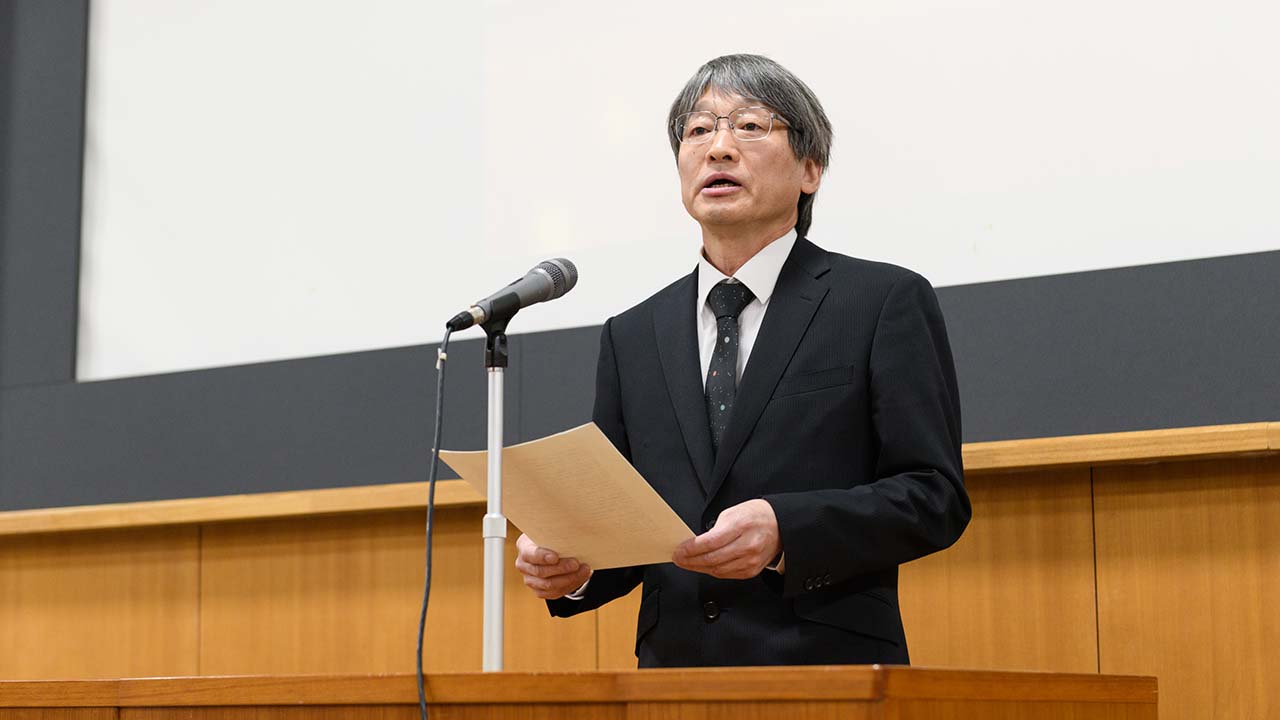A new-year’s message from the Director General, NAOJ
| Topics

Everyone, happy new year of the Snake. I would like to say a few words to mark the start of 2025.
It has been nine months since I assumed the position as Director General of NAOJ. In this time, I have visited every branch and have had a chance to speak with many people. Through committee meetings and events, I have also had the opportunity to speak with many researchers at universities or other research institutes; members of the public; and people from other countries. These conversations have given me a feeling for how important NAOJ is as the central institute for astronomy in Japan, and the high hopes placed upon it.
In terms of producing astronomy research results, an important mission of an Inter-University Research Institute Corporation is to thoroughly prepare large astronomy research facilities and make them available to many researchers so that we can produce results together. The NAOJ Future Planning Symposium was held over the course of four days in early December last year with the goal of formulating the ‘Science Roadmap of NAOJ.’ Many people from across the country participated both onsite and online. The symposium received many proposals, covering a wide range both in scope and in research techniques, reflecting the weight of the expectations placed on NAOJ. Now discussion will proceed in the Science Roadmap Committee and other venues. As Director General, I would like to support their activities, listening carefully to all suggestions to promote the development of astronomy in Japan and around the world.
Last year, I visited all of the branches, both inside and outside of Japan, including Hawai`i and Chile. Each observatory has its own strengths, but they all carry the expectations of the local populace. I could see that along with astronomy, making contributions to local development is close to the hearts of the branch members. And I understood that like the Mitaka Headquarters, they are also suffering as the budget becomes tighter every year. In addition to the Japanese yen being cheap against the U.S. dollar, costs for personnel and supplies continue to rise, but Management Expense Grants are not increasing. It is likely that this situation will continue for several years. As Director General, I am working together with the Directorate, the project Directors, and others to do what we can, but unfortunately as of now, there is no hope of receiving a sufficient budget. As the Universe expands, dark energy starts to act; we can see that the energy increases to match the cosmic expansion. This is a remarkable phenomenon, but unfortunately the same magic does not work on Japan’s budget. The reality is that we have no choice but to carry on, deciding what is necessary, and concentrating on those areas. On the other hand, one thing that everyone can agree on is that, whatever the activity, it must support the advancement of astronomy. I hope you will find ways to use your budgets wisely. At the same time, in line with determining the future plan, I also ask for your cooperation in incorporating into the roadmap roles within NAOJ, and within Japanese astronomy activities as a whole, that incorporate various viewpoints including, for example, human resource development or contributions to the world community.
Of course we can look forward to several big developments in 2025. The Subaru Telescope’s Prime Focus Spectrograph (abbreviated PFS), actualized through long years of international collaboration, is scheduled to start full operation from this year. PFS can simultaneously capture spectra from 2400 celestial objects. Among other tasks, it will investigate the distribution of distant galaxies over a wide area, to solve the mysteries of the dark energy which is thought to be driving the acceleration of the Universe’s expansion. Last year ALMA, established in the Atacama Desert in Chile, succeeded in achieving its highest number of hours of observation in a single year since its inauguration, producing many scientific results ranging from Solar System planets to the distant Universe. And development is underway to greatly expand the observational wavelength bands and improve the sensitivity. In computer simulations, ATERUI III started operation last December, and nation-wide open use has started for this supercomputer dedicated to astrophysics. KAGRA, which was damaged by the Noto Peninsula Earthquake at the start of 2024, has safely finished restoration with better sensitivity than before the earthquake. Efforts are underway to further increase the sensitivity in hopes of directly detecting gravitational waves. Also, in March of last year, the SOLAR-C project team was established within JAXA, and development for the project is also in full-swing in NAOJ. Regarding the Thirty Meter Telescope TMT, the NSF Evaluation Panel Report that was expected to pick between TMT and GMT was released last December, and instead highly evaluated both projects. The NSF Director released a statement that NSF would like to talk with the U.S. Congress about securing the funding. In Hawai`i, activities to obtain the understanding of the local community are continuing at a healthy pace. Dialog based on a new organization known as MKSOA has started with the local community.
In addition to these activities, there are several possibilities for future developments, including a radio telescope on the lunar surface, the Space Strategy Fund, and international collaboration. I have high hopes for many developments from all of NAOJ in 2025, including the three centers and the Division of Science.
Each of us belongs to a relatively small organization, be it a project, a center, or an administrative division. You may not feel like you are making much progress in your daily work, but when you look at NAOJ as a whole, we are moving forward at a good pace. Please take pride in your work as a member of the NAOJ staff, and be diligent in your daily tasks.
Thank you for listening to my New Year’s address.
January 7, 2025
Dr. Mamoru Doi
Director General’s New-year’s Kick-off Meeting Address, January 7, 2025